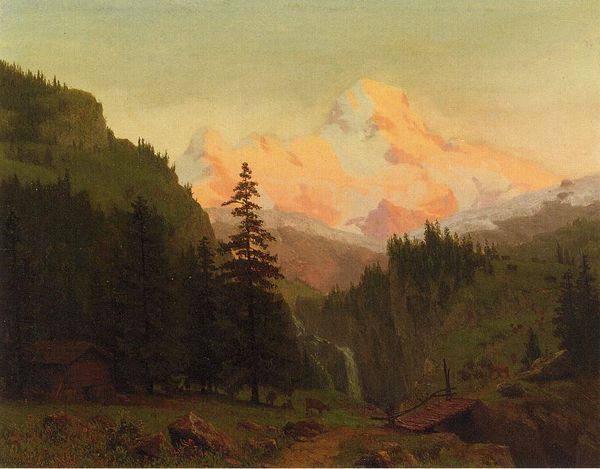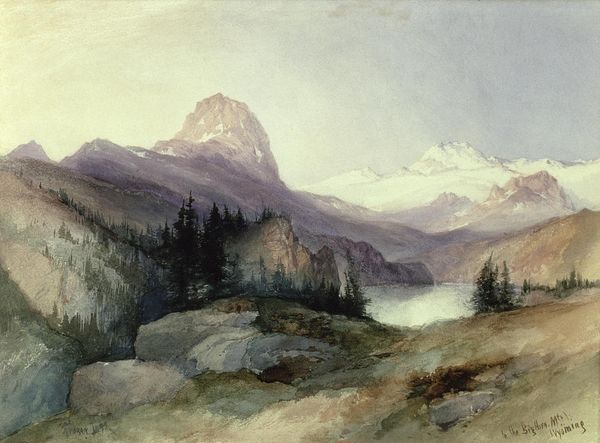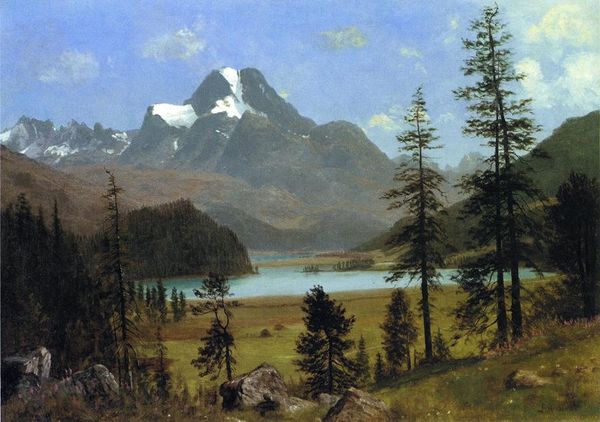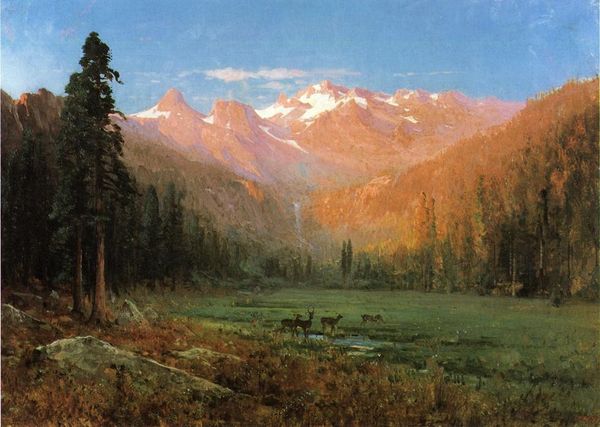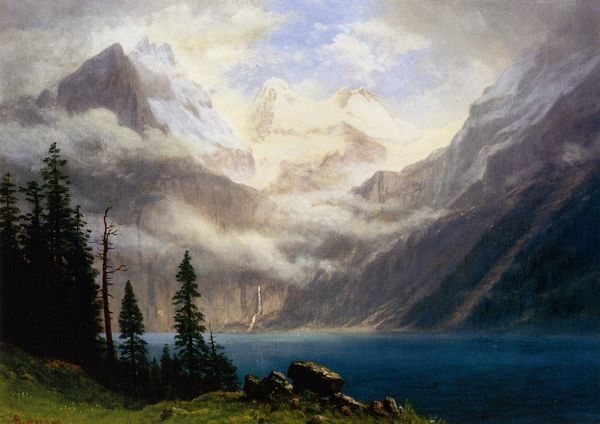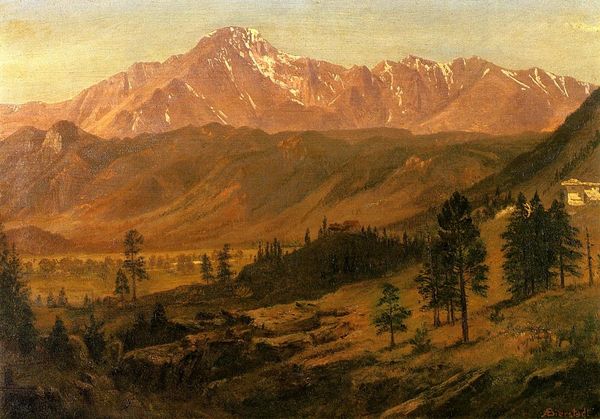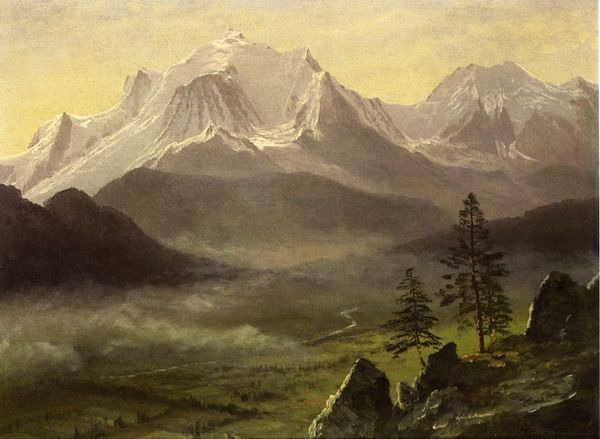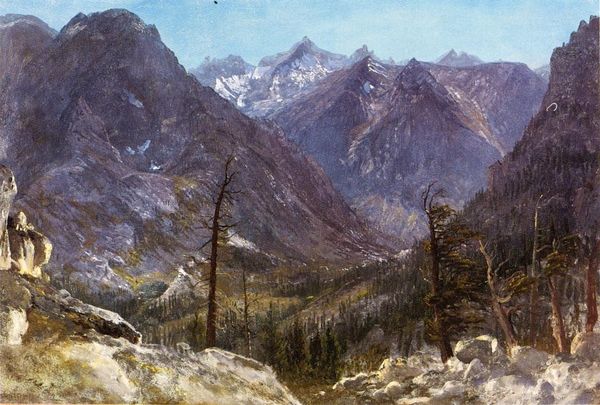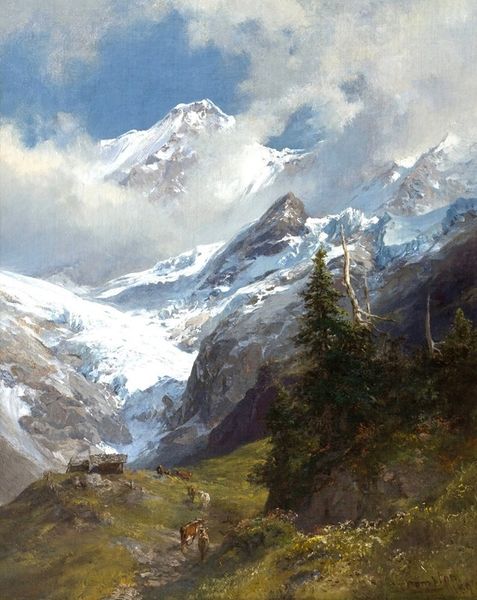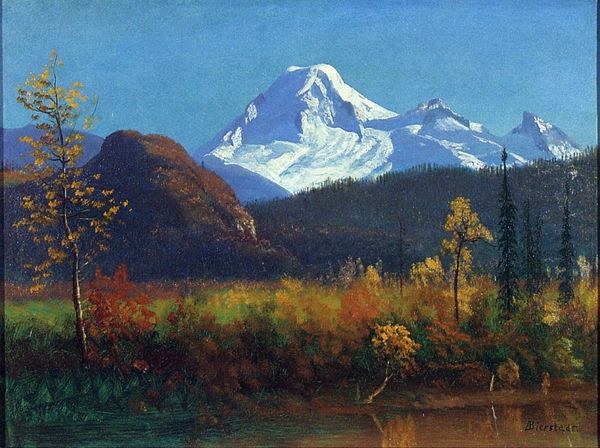
plein-air, oil-paint
#
tree
#
plein-air
#
oil-paint
#
landscape
#
waterfall
#
figuration
#
oil painting
#
forest
#
romanticism
#
mountain
#
naturalistic tone
#
natural-landscape
#
hudson-river-school
#
water
#
realism
Dimensions: 64.45 x 91.76 cm
Copyright: Public domain
Curator: Looking at this, the initial feeling is undeniably awe. The scale and rendering of the mountains evokes something... primal. Editor: It certainly does capture a sense of grandeur. Here, we have Albert Bierstadt’s “Rocky Mountain,” an oil-on-canvas piece that exemplifies the Hudson River School's fascination with the American landscape. Curator: Ah yes, a classic. For me, there’s a subtle narrative being woven here beyond the purely representational. Look at the placement of the pines – their spiky verticality contrasts dramatically with the horizontal sweep of the mountains. It feels like the artist is playing with symbolic power. Editor: Absolutely. Bierstadt's technical skill in rendering light and texture really stands out. The light reflecting on the peaks emphasizes purity and sublimity. However, it is important to consider how this artistic glorification played into ideologies around manifest destiny and westward expansion. This landscape aesthetic was critical to colonialism. Curator: Interesting point. On a different tack, the almost exaggerated perspective is very compelling. The small figure on the grassy slope – an allusion to indigenous people perhaps? Editor: Yes, often such figures represent a romantic vision of harmony with nature and an idealization of indigenous life before European influence. They became tropes rather than specific references. Symbolically, it speaks to a sense of American identity being forged in this wild, unspoiled land – which is a highly constructed and frankly ideological notion, ignoring all the complexities. Curator: True, and maybe that constructed view is part of what makes it feel both attractive and somehow… incomplete? As a work of art, regardless of the ethics or public sentiment that contributed to its creation, it presents us with symbols we keep grappling with as an ever-evolving society. Editor: Yes, viewing Bierstadt's romantic landscape through the critical lens of art history and visual studies adds crucial depth, highlighting both the aesthetic mastery and the cultural frameworks that underpinned the artist’s vision.
Comments
No comments
Be the first to comment and join the conversation on the ultimate creative platform.

